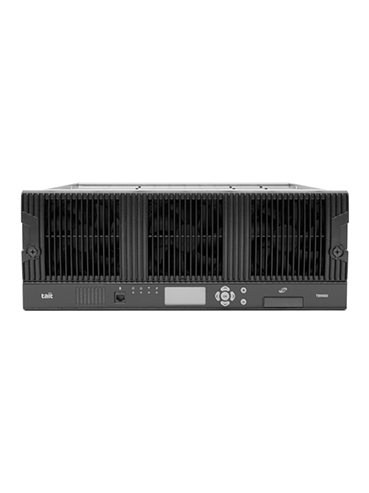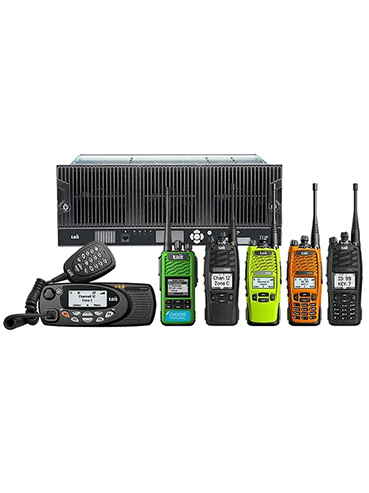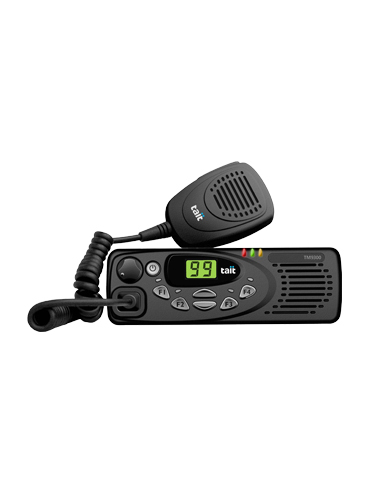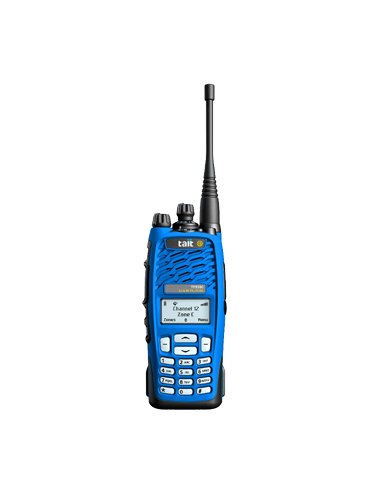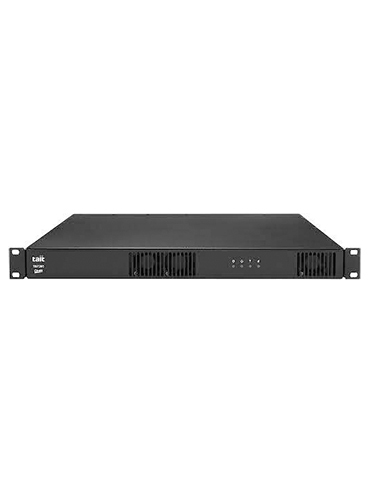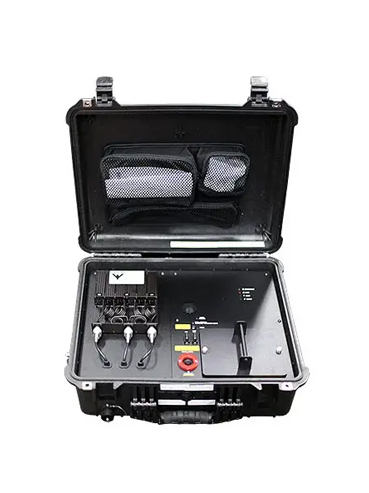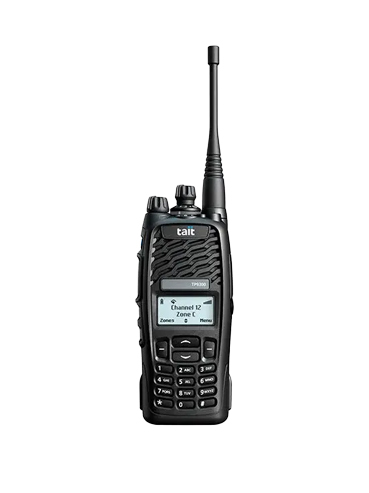TaiT TB9400
Multi-mode platform, High level base station
The base station Tait TB9400 is a multi-mode platform for analog conventional, MPT, DMR and P25 systems. It provides both digital frequency and time division multiple access for FDMA and TDMA operations. The TB9400 provides a spectrally efficient solution, allowing for a migration path between modes with increased capacity, so future-proofing your investment.
Description
Key Features
Specifications
General Specifications
High-Performance Digital Base Station for Mission-Critical Networks
The Tait TB9400 is a next-generation digital base station and repeater designed for organizations that demand secure, resilient, and high-capacity communications. Supporting P25 Phase 1 & Phase 2, DMR, and analog modes, it ensures seamless interoperability and a smooth migration path as your network evolves.
Engineered for 24/7 continuous operation, the TB9400 offers outstanding RF performance, efficient power management, and flexible configuration options that allow it to adapt to diverse operational environments — from public safety and utilities to transport and defense.
Its compact, modular design makes installation and maintenance simple, while remote monitoring and diagnostics reduce downtime and operational costs. With advanced encryption, redundancy features, and scalable capacity, the TB9400 ensures your team stays connected in the most demanding conditions.

| Features |
|---|
| • Multi-mode platform supporting Analog Conventional, AS-IP (Analog Simulcast over IP), MPT, DMR Conventional and Trunking, P25 Conventional and P25 Trunking modes |
| • Simple change of mode through the web interface, or program complex operations with TaskBuilder |
| • Dual mode automatic switching between Analog and P25 conventional |
| • Dual mode automatic switching between Analog and DMR Tier 2 (singlerepeater) |
| • P25 and analog conventional simplex and DFSI support for ease of migration |
| • Adherence to P25 standards Phase1 and Phase2 (ultra-narrow band 6.25kHz) for interoperability |
| • Tait DMR Access and Express solution compatible |
| • Simulcast and Voting in AS-IP, DMR and P25 networks |
| • DMR fallback into single site operation |
| • Linear Simulcast Modulation (LSM) to increase P25 coverage efficiency |
| • Migration capability from Tait AS-IP to P25 Conventional network, with dual mode, simplex and DFSI capabilities or toTait DMR simulcast |
| • Analog line (supporting 4wireE&M) in analog modefor RF linking connection and local console support |
| • Efficient system infrastructure scalability based on IP network connectivity |
| • Extensive range of remote management and monitoring capabilities with a security focus |
| • Built-in basic spectrum analyzer provide son-site diagnostics |
| • Modular structure offers variety of build options to satisfy service ability or space constraints |
| • Designed to military standard MIL-STD-810G |
| Frequency | Range | Tait Band | Configuration |
|---|---|---|---|
| VHF | 136-174MHz | B1 | 50W & 100W |
| UHF | 378-420MHz | HH | 50W & 100W |
| 400-440MHz | H1 | 50W & 100W | |
| 440-480MHz | H2 | 50W & 100W | |
| 470-520MHz | H3 | 50W & 100W | |
| 700/800MHz | Tx: 762-870MHz*, Rx: 794-824MHz | K4 | 50W & 100W |
* The actual Tx frequency coverage in this band is 762-776MHz, and 850-870MHz
| P25, Analog FM | DMR | |
|---|---|---|
| USA (CFR 47) | B1, HH, H1, H2, H3, K4 | B1, H1, H2, H3, K4 |
| Canada (RSS-119) | B1, HH, H1, H2, K4 | B1, H1, H2, K4 |
| Europe (EN300-113, EN300-086, EN301-489) | B11, 2, H1, H21, H3 | B11, 2, H1, H21, H3 |
| Australia/New Zealand (AS/NZS4768) | B11, 2, H1, H21, H3 | B11, 2, H1, H21, H3 |
1 CE EN300086 Wideband Approved
2 EN301929 Marine Wideband Approved on 100W B1 model
| Frequency | Range | Tait Band | Configuration |
|---|---|---|---|
| VHF | 136-174MHz | B1 | Factory set to 15W (Max 30W* typical) |
| UHF | 400-470MHz | H5 | Factory set to 15W (Max 25W* typical) |
| 700/800MHz | 762-870MHz | K4 | Factory set to 15W (Max 25W* typical) |
*The output power of the transportable unit is reduced due to the duplexer loss. This improves the battery shift life. If the unit is operated in a high duty cycle environment, for example the trunking control channel, output power should be limited to 15W.
| Digital Protocol (DMR) |
ETSI TS 102 361-1 V2.6.1, ETSI TS 102 361-2 V2.5.1, ETSI TS 102 361-3 V1.3.1, ETSI TS 102 361-4 V1.12.1 |
| General System Design | ETSI TR102 398 V1.5.1 |
| Applicable MIL-STD | Method | Procedure |
|---|---|---|
| Low pressure (Altitude 15,000ft (4,572m)) | 500.5 | 2 |
| Humidity | 507.5 | 2 |
| Vibration | 514.6 | 1 |
| Shock | 516.6 | 1 |
| Input | Output | |
|---|---|---|
| Audio interfaces | 600Ω Balanced | 600Ω Balanced |
| Audio interface level | -30dBm to 0dBm nominal (300Hz to 2,550Hz) | -30dBm to 0dBm nominal (300Hz to 2,550Hz) |
| Frequency response | +0.5/-2.0dB rel. 1kHz (300Hz to 3,000Hz) | |
| Passband ripple | -3 ~ +1dB | -3 ~ +1dB |
| Audio distortion | <3% typical (line to RF) | <3% typical (RF to line) |
| Modulation types | FM, C4FM, LSM, H-DQPSK, FFSK, 4FSK |
| P25 Modulation fidelity (TIA-102) | <2% |
| Adjacent channel power | -60dBc (ETSI) and -67dBc (TIA-102) |
| Conducted spurious emissions | |
| VHF | <-36dBm 9kHz to 1GHz and <-30dBm 1GHz to 4GHz |
| UHF | <-36dBm 30MHz to 1GHz and <-30dBm 1GHz to 4GHz/12.75GHz |
| 700/800/900MHz | <-20dBm to 9GHz |
| Output power | |
| 50W | Programmable 5-50W |
| 100W | Programmable 10-100W |
| Duty cycle | 100% |
| Modulation types | C4FM, H-CPM, Analog FM, FFSK, 4FSK |
| Radiated spurious emissions | <-57dBm EIRP to 1GHz |
| Conducted spurious emissions | <-90dBm to 1GHz |
| P25 (TIA-102) | |
| Sensitivity | 0.22µV (-120dBm) @ 5% BER |
| Intermodulation response attenuation | 85dB |
| Adjacent channel rejection | 60dB |
| Co-channel rejection | 9dB |
| DMR | |
| Unfaded sensitivity ETS 300 113 Typical |
-119dBm (0.25µV) @ 1% BER |
| Selectivity ETS 300 113 @ 1% BER |
≥82dB (VHF), ≥79dB (UHF) |
| Intermodulation response attenuation | ≥78dB @ 1% BER unfaded |
| Blocking rejection > 1MHz |
100dB @ 1% BER |
| Analog | |
| Sensitivity | -120dBm @ 12dB SINAD (0.22µV) |
| Selectivity (EIA-603) | 85dB (VHF & UHF), 79dB (700/800MHz) |
| Intermodulation | 80dB (ETSI) |
| Spurious response attenuation | ≥100dB (ANSI/TIA) and ≥90dB (ETSI) |
| FM hum and noise VHF/UHF |
45dB (ANSI/TIA), 50dB (ETSI) |
| 700/800/900MHz | 43dB (ANSI/TIA) |
| Modulation types | FM, C4FM, LSM, H-DQPSK, FFSK, 4FSK |
| P25 Modulation fidelity (TIA-102) | <2% |
| Adjacent channel power | -60dBc (ETSI) and -67dBc (TIA-102) |
| Conducted spurious emissions | |
| VHF | <-36dBm 9kHz to 1GHz and <-30dBm 1GHz to 4GHz |
| UHF | <-36dBm 30MHz to 1GHz and <-30dBm 1GHz to 4GHz/12.75GHz |
| 700/800/900MHz | <-20dBm to 9GHz |
| Output power | |
| 50W | Programmable 5-50W |
| 100W | Programmable 10-100W |
| Duty cycle | 100% |

